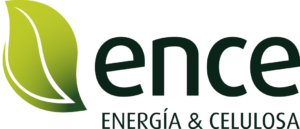The implementation and optimization of the most modern technologies in the Navia biofactory have made it possible to reduce the specific water consumption of the plant per ton produced by 19% compared to last year’s data. The improvement in the efficiency of water resources is due to the investment project “Navia 80”, as well as the continuous work of the company’s professionals in optimizing processes and managing the water cycle. Furthermore, the investment in a new treatment equipment has made it possible to substantially improve the quality of the effluent from the facilities.
The “Navia 80” project, thanks to an investment of 160 million euros (40 million destined for environmental improvements), incorporated numerous advances in the Asturian biofactory related to the reduction of water consumption for the manufacture of paper pulp. These actions follow the criteria of minimization, recovery and reuse, contributing to a greater efficiency and sustainability of the plant, and affect practically all the processes.
An example is the new pasta washing equipment, which requires less water than the previous ones for a better result. Also noteworthy is the recovery and treatment of backwash water from the inlet treatment filters to the biofactory.
Thanks to these advances, these improvements were consolidated last September with a 19% reduction in water consumption per ton of pulp produced compared to 2019. However, the continuous improvement process implemented in the bio-factories of Ence will allow the human team of the naviega plant to continue reducing the consumption of water resources, thus promoting its sustainability.
On the other hand, the installation of a new primary effluent treatment system, consisting of a new dissolved air flotation unit (DAF), caused a significant reduction in total solids levels in the biofactory effluent, by 63 % in relation to the data for 2018. This new equipment allows the separation of the suspended particles from the effluent to be treated by injecting air microbubbles, so that the solids adhere to the aforementioned microbubbles on their upward path, floating towards the upper separator system. The collected material is valued energetically inside the plant, another example of circular economy in Ence.
The investments made in the Navia biofactory in reducing water consumption and improving effluent quality are aligned with the Sustainable Development Goals promoted by the United Nations. Specifically, with goal number 6, regarding clean water and sanitation, focused on guaranteeing universal access to safe and affordable drinking water for all by 2030.
In this way, the biofactory continues to improve its environmental performance, which is already endorsed by the “Nordic Swam” ecolabel, the seal of the Nordic countries, for complying with the most demanding criteria of environmental respect, the European EU Ecolabel, the “Zero Waste” recognition given by AENOR to those organizations that carry out a more efficient management of their waste and that are capable of recovering it.
